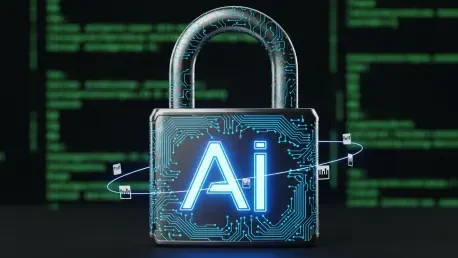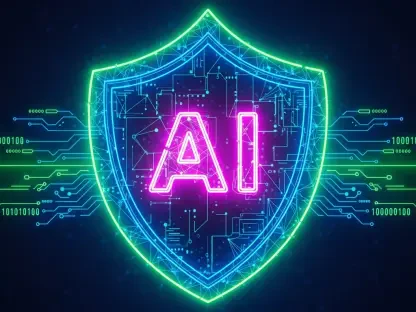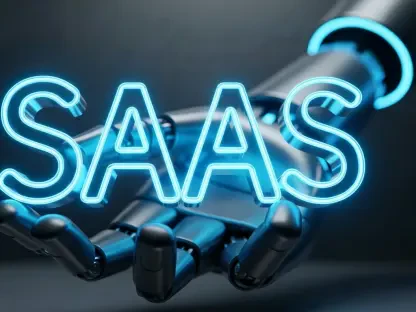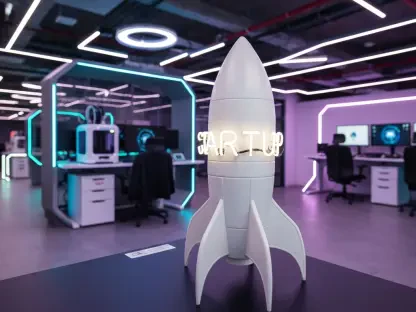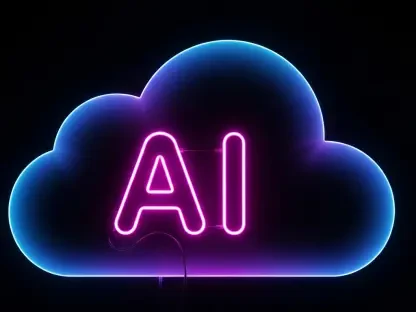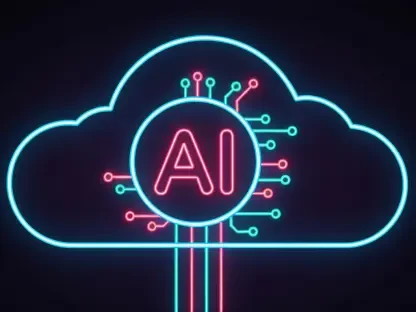Introduction: The Escalating Stakes of AI Security
In an era where artificial intelligence drives decisions in sectors ranging from healthcare to national defense, the security of these systems has become a paramount concern, with AI models now integral to critical infrastructure. A single breach—whether through data manipulation or model tampering—can cascade into catastrophic consequences, costing billions in damages and eroding public trust. This pressing reality underscores the urgency for robust security measures tailored to AI’s unique vulnerabilities, setting the stage for collaborative efforts to redefine how industries safeguard their digital assets.
The rapid proliferation of AI technologies across enterprises has outpaced traditional cybersecurity approaches, leaving gaps that malicious actors are quick to exploit. As organizations grapple with these challenges, initiatives like the Coalition for Secure AI (CoSAI), under the OASIS Open consortium, have emerged as beacons of innovation. With over 40 industry partners, including tech giants such as Google, IBM, Microsoft, and NVIDIA, CoSAI is spearheading efforts to establish frameworks that promise to secure AI at scale.
This report delves into the transformative potential of CoSAI’s dual frameworks, exploring their role in addressing both preventive and reactive dimensions of AI security. From ensuring model integrity to managing sophisticated attacks, these tools offer a roadmap for industries navigating an increasingly complex threat landscape. The discussion ahead examines their structure, challenges, regulatory alignment, and future implications for AI deployment.
Understanding the AI Security Landscape
The integration of AI into business operations and critical systems has accelerated at an unprecedented pace, reshaping industries with automation and predictive analytics. However, this widespread adoption has exposed unique vulnerabilities, such as data poisoning and model theft, which conventional security protocols struggle to address. The stakes are high, as compromised AI systems can lead to flawed decision-making, financial losses, and even risks to public safety in sectors like transportation or energy.
Recognizing these threats, collaborative initiatives have gained prominence as essential mechanisms for pooling expertise and resources. CoSAI stands out as a leading force, operating under OASIS Open and uniting diverse stakeholders to tackle AI-specific risks. Its mission centers on fostering trust and resilience in AI deployments, ensuring that systems remain secure amid growing complexity and scale.
The coalition’s strength lies in its broad industry representation, bringing together perspectives from technology leaders and innovators. This collective approach not only amplifies the impact of security solutions but also ensures they are adaptable across varied use cases. As AI continues to permeate everyday operations, understanding this security landscape becomes a foundational step for organizations aiming to protect their investments and reputation.
CoSAI Frameworks: A Dual Approach to AI Assurance
Model Signing Framework for Integrity and Trust
One of CoSAI’s cornerstone contributions is the “Signing ML Artifacts” framework, designed to fortify the AI supply chain by ensuring model integrity. This approach focuses on creating tamper-proof metadata records through digital signatures, a critical measure to verify that AI models remain unaltered from development to deployment. By embedding such safeguards, the framework addresses a core concern: the risk of unauthorized modifications that could undermine system reliability.
Beyond basic integrity checks, the framework introduces signature chaining to enable provenance tracking, allowing stakeholders to trace a model’s journey across its lifecycle. It also incorporates structured attestations for enhanced governance, providing a verifiable record of compliance and accountability. These features collectively bolster confidence among users and regulators, ensuring that AI systems can be trusted in high-stakes environments.
To facilitate adoption, the framework offers a staged maturity model, enabling organizations to implement security measures incrementally. Starting with basic artifact signing, businesses can progress toward comprehensive policy controls at a pace aligned with their capabilities. This pragmatic structure ensures that even resource-constrained entities can begin securing their AI assets without overwhelming operational demands.
AI Incident Response Framework for Threat Mitigation
Complementing prevention, CoSAI’s “AI Incident Response Framework V1.0” equips organizations to handle AI-specific threats with precision. Unlike traditional cybersecurity incidents, attacks on AI systems—such as prompt injection or inference manipulation—require tailored detection and response strategies. This framework provides detailed guidance to identify these risks early, minimizing potential damage to operations or data integrity.
Central to this resource are actionable playbooks that outline steps for containment and remediation, covering scenarios like data poisoning and model theft. It also emphasizes forensic investigation techniques to uncover attack origins, enabling teams to strengthen defenses post-incident. Such specificity ensures that security practitioners are not left adapting generic protocols to novel challenges, but instead have clear, relevant tools at their disposal.
Additionally, the framework advocates for layered defense strategies, encouraging a multifaceted approach to threat mitigation. By addressing governance challenges and prioritizing security investments, it helps organizations build resilience against evolving attack vectors. This comprehensive preparation is vital as AI systems become prime targets for sophisticated adversaries seeking to exploit their unique weaknesses.
Challenges in Securing AI Systems at Scale
Securing AI at scale presents a myriad of obstacles, starting with technological hurdles that stem from the inherent complexity of these systems. Unlike traditional software, AI models are susceptible to subtle manipulations, such as adversarial inputs, that can skew outputs without triggering conventional alarms. Developing defenses against such nuanced threats demands continuous innovation and adaptation, often outpacing existing security infrastructure.
Regulatory challenges further complicate the landscape, as compliance requirements for AI deployment are still evolving across jurisdictions. Organizations must navigate a patchwork of standards, balancing innovation with accountability, while anticipating stricter mandates in the coming years. This uncertainty can deter investment in long-term security solutions, leaving systems exposed during transitional periods.
Operationally, integrating new frameworks into established workflows poses significant difficulties, particularly for large enterprises with legacy systems. The need for interoperability and scalability becomes paramount to avoid disruptions, yet achieving this harmony requires substantial resources and expertise. CoSAI’s frameworks aim to mitigate these issues by offering modular, adaptable solutions, paving the way for seamless adoption across diverse environments.
Regulatory and Compliance Implications of AI Security
As AI technologies face increasing scrutiny from policymakers, regulatory frameworks are tightening to ensure safe and ethical deployment. Governments worldwide are drafting policies that mandate transparency and accountability, placing pressure on organizations to demonstrate robust security practices. Failure to comply risks not only penalties but also reputational damage in an era where trust is a competitive differentiator.
CoSAI’s model signing framework aligns directly with these traceability demands, providing mechanisms to document and verify AI model origins and modifications. Such capabilities simplify audits and reporting, ensuring that businesses can meet regulatory expectations without compromising efficiency. This alignment is crucial as mandates grow more stringent, particularly in sensitive sectors like finance and healthcare.
The incident response framework also supports compliance by emphasizing auditability and transparent handling of AI-related breaches. By offering structured processes for documenting and resolving incidents, it enables organizations to maintain clear records for oversight bodies. Furthermore, the interoperability of CoSAI’s tools with global standards positions them as a bridge between current practices and future regulatory landscapes, influencing industry norms for secure AI adoption.
The Future of AI Security with CoSAI’s Vision
Looking ahead, the trajectory of AI security will be shaped by emerging technologies like agentic AI architectures, which introduce new layers of autonomy and risk. These advancements demand frameworks that can evolve in tandem, addressing vulnerabilities that are yet to be fully understood. CoSAI’s commitment to continuous updates ensures that its guidance remains relevant amid such rapid technological shifts.
Broader initiatives within CoSAI, such as Google’s Secure AI Framework (SAIF), highlight a multipronged approach to building secure-by-design systems. These efforts underscore the importance of embedding security from the outset, rather than as an afterthought, setting a precedent for future AI development. Community collaboration remains a cornerstone, driving innovation through shared insights and diverse expertise.
Potential disruptors, including geopolitical tensions and resource constraints, could challenge the pace of progress in AI security. However, the coalition’s emphasis on scalability and open participation offers a buffer against such uncertainties. By fostering an ecosystem of continuous improvement, CoSAI is poised to lead the charge in shaping a future where AI systems are both powerful and protected.
Conclusion
Reflecting on the insights gathered, it becomes evident that CoSAI’s dual frameworks mark a significant milestone in fortifying AI systems against an array of threats. Their focus on model integrity and incident response provides a balanced strategy that addresses both prevention and recovery with equal rigor. The collaborative spirit behind their development stands as a testament to the power of industry unity in tackling complex challenges.
Moving forward, organizations are encouraged to adopt these frameworks as a starting point, customizing them to fit specific operational needs while contributing to their ongoing refinement. Engaging with CoSAI’s community offers a pathway to stay ahead of emerging risks, ensuring that security measures keep pace with AI innovation. This proactive stance is essential for building a resilient foundation for future advancements.
Ultimately, the journey toward secure AI systems demands sustained investment in both technology and partnerships. Stakeholders across sectors need to prioritize interoperability and transparency, leveraging CoSAI’s resources to navigate regulatory and operational hurdles. By committing to these principles, the industry can transform security from a barrier into an enabler of trust and progress.
